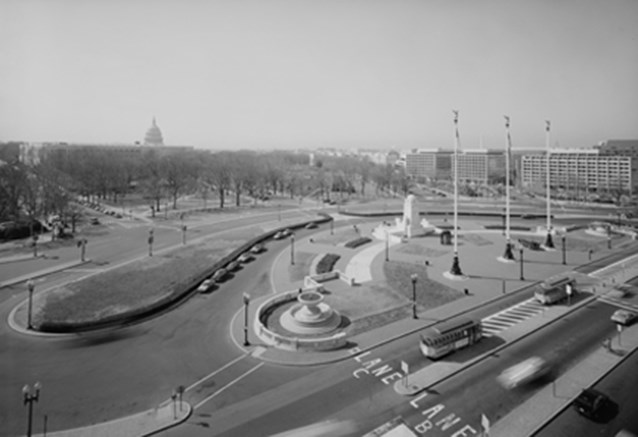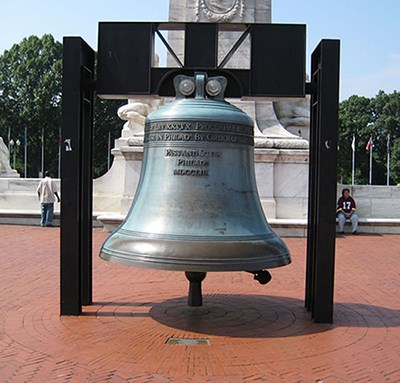Last updated: October 8, 2021
Article
Columbus Plaza Cultural Landscape

HABS, Library of Congress
Designed by Union Station architect Daniel H. Burnham, Columbus Plaza was constructed following the opening of the station in 1907. Burnham was a member of the McMillan Commission. Organized in 1901 under the leadership of Senator James McMillan, the commission set out to improve the public spaces in Washington, DC. The commission's 1902 report recommended building a train station fit for the nation’s capital; it served as a grand entranceway to Washington and the nearby Capitol building. Burnham and fellow architect Pierce Anderson designed the station.

NPS
Originally, eight circular and elliptical traffic islands separated the roads on the outside of the plaza. By about 1910, all of Burnham’s features, except for the central fountain, were in place on the plaza. In 1907, an act of Congress authorized the erection of a memorial to Christopher Columbus in Washington. In 1908 the plaza was selected as the location for the memorial and sculptor Lorado Taft’s design was chosen.
Columbus Plaza was listed on the National Register in 1980 with a 2007 revision. Columbus Plaza is also included in the 1997 National Register listings for the L’Enfant Plan of Washington, DC and the 2007 Memorials in Washington, DC. The National Register lists the period of significance for Columbus Plaza as 1903 to 1912.
The plaza's grass panels and the brick paving have remained largely unchanged since the period of significance. The traffic islands included in Burnham’s design have been altered dramatically since the historic period. The original eight elliptical and circular islands were reconfigured or removed beginning in the mid-1920s. These features, along with the rostral columns and stone balustrades at the north of the plaza, are maintained by other agencies.
Quick Facts
- Cultural Landscape Type: Designed
- National Register Significance Level: Local
- National Register Significance Criteria: C
- Period of Significance: 1903-1914
